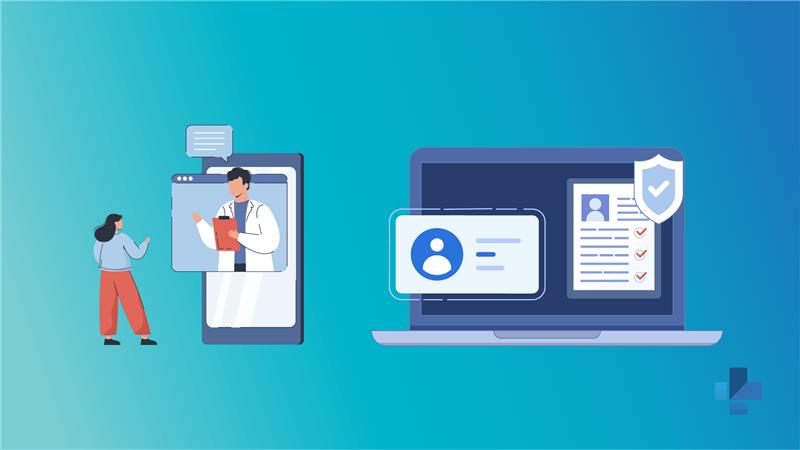
Telehealth has transformed modern healthcare delivery and offers patients access to quality care regardless of their location. As hospitals are increasing tiered virtual care services, credentialing telehealth providers has become an important process to ensure patient safety, regulatory compliance, and care quality.
Telehealth credentialing introduces new complexity for different providers who may be located in many states to ensure secure technology platforms and maintain consistent standards for remote care. It is important to understand how hospitals handle these unique challenges to support the continued growth and reliability of virtual healthcare.
Telehealth Credentialing: What It Is and Why It Matters
Telehealth credentialing is a process by which healthcare organizations and hospitals verify the qualifications, licenses, and professional backgrounds of providers who deliver virtual care. This makes sure that every telehealth professional meets the same standards as onsite clinicians and upholds the patient’s trust and the institution’s integrity.
Credentialing includes validating education, certification, licensure, and professional experience, followed by primary source verification (PSV). It is a direct check with the issuing authority. This process safeguards the patients by ensuring qualified providers deliver care through telehealth platforms.
Proper credentialing supports regulatory compliance with agencies like the Joint Commission and the Centers for Medicare & Medicaid Services (CMS). Hospitals reduce risk exposure and maintain credibility in an increasingly digital care landscape.
How Licensing Relies on Credentialing and Primary Source Verification
The Hospital’s Role in Telehealth Provider Credentialing
Hospitals play a central role in maintaining quality and consistency for in-person and virtual care. The telehealth credentialing process includes the following steps:
Application Submission: Providers submit detailed credentials, including education, licensure, and clinical experience.
Primary Source Verification (PSV): Hospitals verify credentials directly with the issuing institutions.
Background Checks: Professional history, malpractice claims, and disciplinary actions are reviewed.
Committee Review: Credentialing committees assess provider qualifications and make recommendations.
Privileging: The hospital grants specific clinical privileges aligned with the provider’s scope of practice.
Ongoing Monitoring: Regular re-credentialing and performance evaluations ensure continued compliance.
Hospitals maintain telehealth privileges equivalent to in-person care and ensure that patients receive safe, effective treatment regardless of the delivery mode.
How to Simplify Hospital Credentialing for Faster Compliance
Challenges Specific to Telehealth Credentialing for Hospitals
While telemedicine improves patient access, it challenges hospital credentialing. Major problems include:
Multi-State Licensure: Telehealth providers treat patients in multiple states, each with their own licensing requirements. Managing and verifying these licenses can be time-consuming and costly.
Technology and Security Compliance: Credentialing now extends to ensuring that providers use HIPAA-compliant, secure telehealth platforms to protect patient data.
Paperwork and Administrative Duplication: Providers practicing across various hospital systems may face repeated credentialing steps, leading to delays and inefficiencies in onboarding.
Addressing these barriers is crucial for hospitals seeking to maintain compliance and expand virtual services effectively.
Best Practices Hospitals Use to Streamline Telehealth Credentialing
Leading hospitals are embracing technology-driven credentialing solutions to streamline and accelerate the process. Key best practices include:
Implementing Specialized Credentialing Software: Automated tools simplify application management, document collection, and renewal tracking.
Centralized Credentialing Platforms: Hospitals use shared digital systems that allow provider data to be securely stored and reused across facilities.
Credentialing by Proxy: CMS allows hospitals to accept another institution’s credentialing verification, saving significant time and administrative effort.
Leveraging Compacts: Programs such as the Interstate Medical Licensure Compact (IMLC) facilitate multi-state licensing for eligible physicians.
Automation of Reminders and Renewals: Regular alerts for expiring licenses and credentials help ensure continuous compliance.
These strategies enhance efficiency, reduce duplication, and allow hospitals to focus more on patient care than paperwork.
Impact of Telehealth Credentialing on Hospital Operations and Patient Care
Efficient telehealth credentialing directly influences both hospital operations and patient outcomes. A streamlined process shortens provider onboarding time, ensuring faster access to qualified care professionals.
Moreover, high-quality credentialing serves as a cornerstone of malpractice risk management by confirming that only competent, verified professionals deliver patient care. As telehealth continues to expand, credentialing readiness will determine how quickly and effectively hospitals can adapt to changing care delivery models.
The Role of Credentialing in Malpractice Risk Management
Conclusion
Hospital-led telehealth credentialing plays a vital role in maintaining safety, compliance, and patient confidence in virtual care. By adopting comprehensive, tech-enabled credentialing approaches, hospitals can streamline workflows, reduce risks, and ensure that their telehealth programs deliver the same quality of care as traditional in-person services.
Explore medtigo’s expertise: About Us
Contact medtigo for help: support@medtigo.com
FAQs
1. How do hospitals verify telehealth providers’ licenses across multiple states?
Hospitals use primary source verification (PSV) and digital license databases, often supported by the Interstate Medical Licensure Compact (IMLC), to streamline cross-state validation.
2. What technology platforms support efficient telehealth credentialing for hospitals?
Credentialing software platforms integrate provider data, automate reminders, and manage renewals to reduce manual workload and errors.
3. How does credentialing proxy work in telehealth?
Credentialing by proxy allows hospitals to accept another accredited institution’s credentialing decisions for shared providers, reducing redundancy.
4. What are hospitals’ responsibilities in monitoring telehealth providers for post-credentialing?
Hospitals must conduct ongoing reviews, monitor license renewals, and assess performance metrics to maintain compliance and safety standards.
5. How are telehealth-specific privacy and security standards incorporated into credentialing processes?
Credentialing includes reviewing providers’ use of HIPAA-compliant technology and ensuring secure communication platforms are in place for patient interactions.















